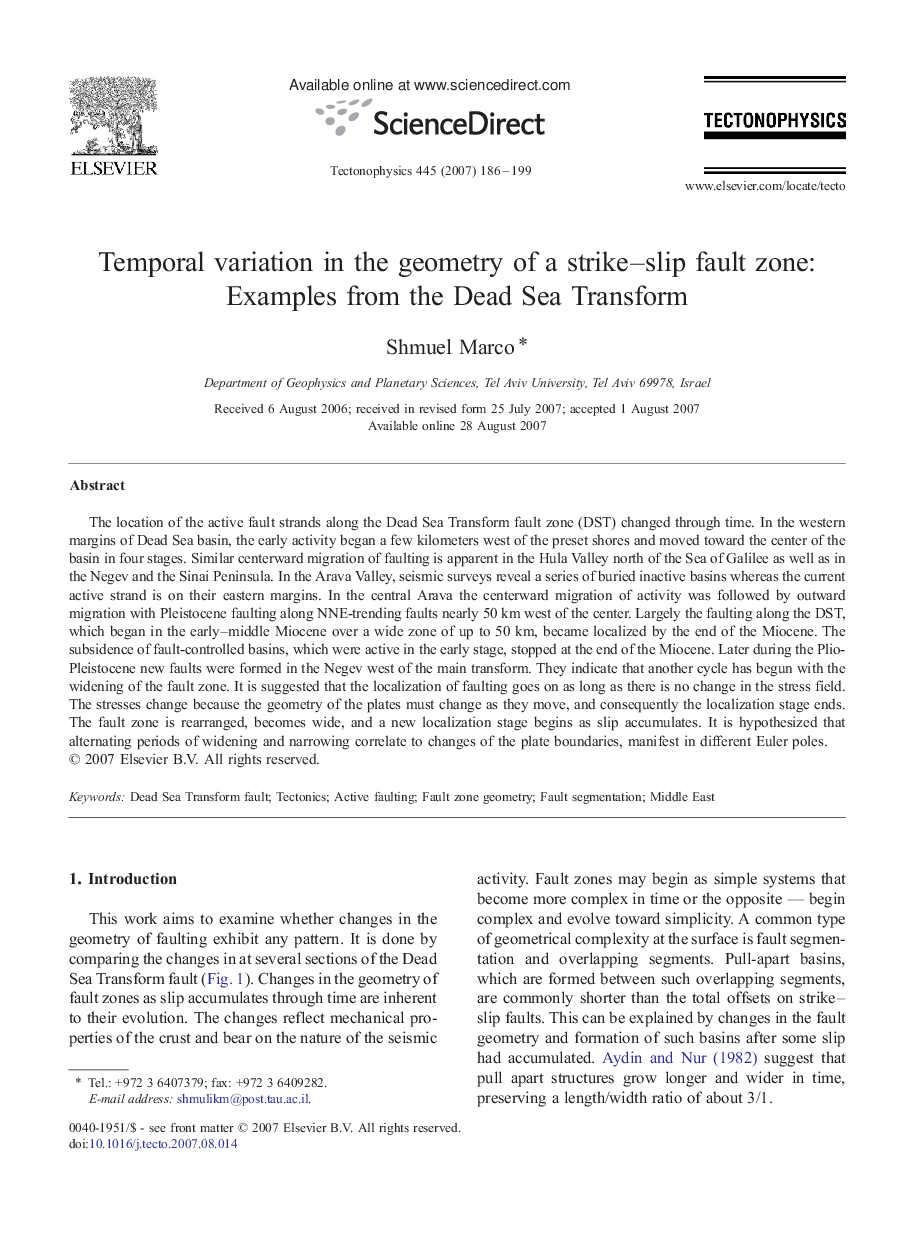| Article ID | Journal | Published Year | Pages | File Type |
|---|---|---|---|---|
| 4694762 | Tectonophysics | 2007 | 14 Pages |
The location of the active fault strands along the Dead Sea Transform fault zone (DST) changed through time. In the western margins of Dead Sea basin, the early activity began a few kilometers west of the preset shores and moved toward the center of the basin in four stages. Similar centerward migration of faulting is apparent in the Hula Valley north of the Sea of Galilee as well as in the Negev and the Sinai Peninsula. In the Arava Valley, seismic surveys reveal a series of buried inactive basins whereas the current active strand is on their eastern margins. In the central Arava the centerward migration of activity was followed by outward migration with Pleistocene faulting along NNE-trending faults nearly 50 km west of the center. Largely the faulting along the DST, which began in the early–middle Miocene over a wide zone of up to 50 km, became localized by the end of the Miocene. The subsidence of fault-controlled basins, which were active in the early stage, stopped at the end of the Miocene. Later during the Plio-Pleistocene new faults were formed in the Negev west of the main transform. They indicate that another cycle has begun with the widening of the fault zone. It is suggested that the localization of faulting goes on as long as there is no change in the stress field. The stresses change because the geometry of the plates must change as they move, and consequently the localization stage ends. The fault zone is rearranged, becomes wide, and a new localization stage begins as slip accumulates. It is hypothesized that alternating periods of widening and narrowing correlate to changes of the plate boundaries, manifest in different Euler poles.
